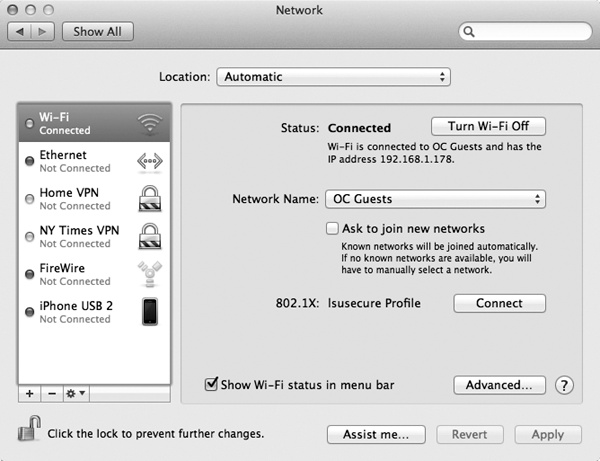Network Central and Multihoming
In this chapter, you’ll be spending a lot of time in the Network
pane of System Preferences (Figure 17-1). (Choose
![]() →System Preferences; click Network.) This list
summarizes the ways your Mac can connect to the Internet or an office
network—Ethernet, WiFi, Bluetooth, cellular modem card, VPN (Chapter 21), and so on.
→System Preferences; click Network.) This list
summarizes the ways your Mac can connect to the Internet or an office
network—Ethernet, WiFi, Bluetooth, cellular modem card, VPN (Chapter 21), and so on.
Multihoming
The order of the network connections listed in the Network pane is important. That’s the sequence the Mac uses as it tries to get online. If one of your programs needs Internet access and the first method isn’t hooked up, then the Mac switches to the next available connection automatically.
In fact, OS X can maintain multiple simultaneous network connections—Ethernet, WiFi, dial-up, even FireWire—with a feature known as multihoming.
This feature is especially relevant for laptops. When you open your Web browser, your laptop might first check to see if it’s plugged into an Ethernet cable, which is the fastest, most secure type of connection. If there’s no Ethernet, then it looks for a WiFi network.

Figure 17-1. You set up all your network connections here, and you can connect to and disconnect from all your networks here. The listed network connections are tagged with color-coded dots. A green dot means turned on and connected to a network; ...
Get OS X Mavericks: The Missing Manual now with the O’Reilly learning platform.
O’Reilly members experience books, live events, courses curated by job role, and more from O’Reilly and nearly 200 top publishers.

